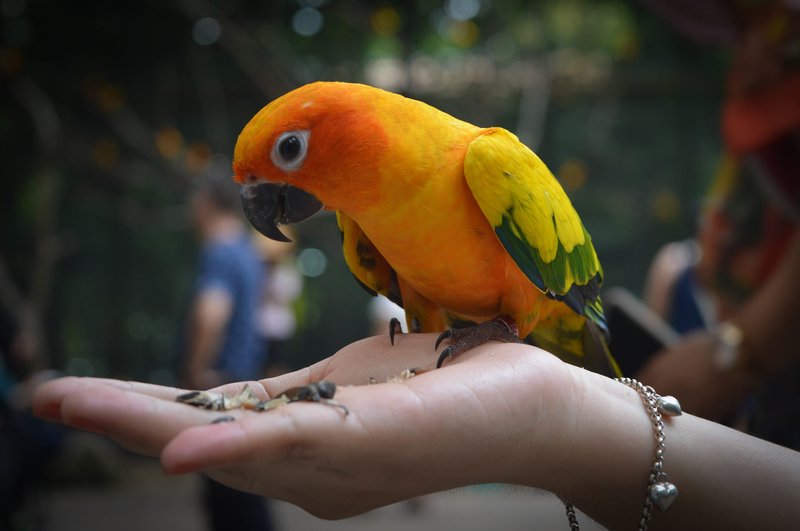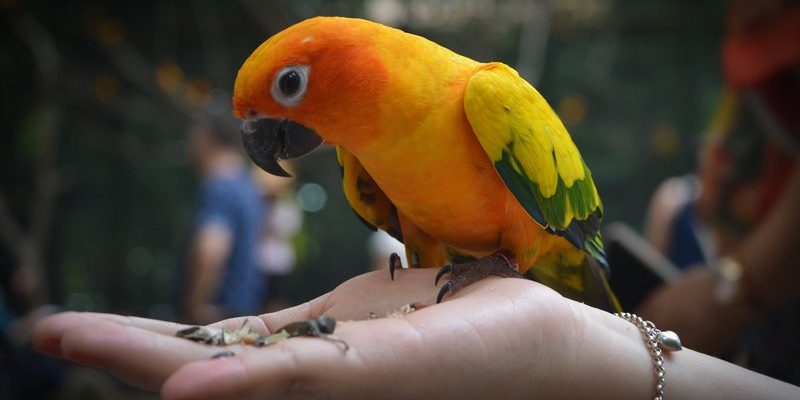
Conures are known not just for their playful personalities but also for their adaptability and hunting skills. They thrive in a wide variety of habitats, from tropical forests to savannas, and showcase unique methods for both catching food and navigating the sky. If you’ve ever marveled at the intricate dance of birds in flight, you’ll find conures especially intriguing. Let’s dive into the world of these colorful companions and explore their remarkable flying and hunting methods.
Understanding Conures: A Quick Overview
Before we get into their flying and hunting styles, let’s take a moment to understand what conures are. There are many species of conures, such as the green-cheeked conure, sun conure, and blue-crowned conure. They vary in size and color but share some common traits that make them quite unique.
One interesting thing about conures is their social nature. They’re often found in flocks, which not only aids in their social behavior but also plays a crucial role in their hunting strategies. Being in larger groups helps them spot predators and find food more efficiently. Honestly, if you imagine a bustling community, you’re on the right track—conures work together, just like friends sharing a meal or helping each other out.
How Conures Fly: Their Unique Flight Patterns
When it comes to flying, conures are remarkable. They have strong, pointed wings that allow them to maneuver quickly through trees and bushes. Unlike some birds that glide or soar, conures often flap their wings vigorously, giving them a burst of speed when needed. This style of flying is not just for show; it’s also about survival.
Conures are known for their acrobatic flying. They can swiftly change direction, making sudden turns as they navigate through their environment. Whether they’re dodging a predator or racing to catch up with a friend, these agile maneuvers are essential for their safety and socializing. You might compare it to a dancer effortlessly shifting between moves—graceful yet powerful.
Furthermore, conures use their flying skills to forage for food. They’ll often fly from tree to tree, searching for ripe fruits, seeds, and even insects. Their strong vision helps them spot food from a distance, making them effective hunters in their own right.
Hunting Techniques: How Conures Find Their Food
You might be wondering, “How exactly do conures hunt?” Well, these birds employ various techniques depending on the food source available. Typically, they are opportunistic feeders, meaning they’ll take advantage of whatever food is easily accessible.
One common method is to forage in flocks. When conures are in groups, they can work together to spot potential food sources. For example, one bird might call attention to a ripe fruit, prompting the others to join in. It’s a bit like a team sport—everyone pitches in to find the best snacks.
Additionally, conures utilize their strong beaks for cracking open hard seeds and nuts. Their beaks are perfectly designed for this task, making them efficient hunters. Imagine trying to open a tough peanut; with a conure’s beak, it’s like having the ultimate tool for the job. This means they can access a wide variety of foods that other birds might struggle with.
The Role of Vocalizations in Hunting
Let’s talk about noise—conures are known for their loud calls and vocalizations. You might think they’re just being chatty, but their sounds serve a greater purpose, especially when hunting. These vocalizations help them communicate with each other, signaling when they’ve found food or when there’s danger nearby.
For instance, a conure might let out a sharp call to alert its flockmates about a nearby food source. This signal quickly spreads through the group, and soon you’ll see a flurry of colorful birds swooping down to check it out. It’s like a loud dinner bell ringing in a bustling kitchen—everyone knows it’s time to grab some food!
Moreover, vocalizations can also help in coordinating their movements during a hunt. If they’re scouting for food in an area where they’re looking for specific fruits, their calls can guide others to ensure they don’t miss out.
Adaptability and Learning: Skills for Survival
Another essential aspect of conures’ hunting techniques is their remarkable adaptability. They aren’t picky eaters, and their diets can change based on what’s available in their environment. This flexibility is crucial for their survival, especially during seasons when certain foods are scarce.
Conures also learn from one another. Younger birds often watch their elders to pick up hunting techniques, whether it’s discovering a new foraging spot or figuring out how to open a nut. It’s similar to how we learn cooking by watching our parents or friends whip up a meal. This hands-on learning ensures that vital skills and knowledge are passed down through generations.
You might even notice that some conures develop their unique preferences and techniques over time. One might become an expert at finding hidden fruits high in the trees, while another excels at scaring up insects from the ground. This specialization helps create a more adaptable flock—each member contributes in its way.
Flight and Hunting Challenges
While conures are skilled fliers and hunters, they face challenges in the wild. Predators, habitat loss, and changing climates impact their ability to thrive. For instance, a hawk or snake might threaten a feeding conure, making their swift flight skills essential for survival.
Moreover, during dry seasons when food is scarce, conures must work harder to find adequate nutrition. They might need to travel longer distances to locate food, sometimes venturing into unfamiliar territory. This is where their strong social structure becomes vital; a flock can provide support and protection against predators while they search for food together.
Another aspect to consider is human impact. As forests are cleared for development, conure habitats shrink. This forces them to adapt quickly or risk endangerment. Conservation efforts focusing on habitat restoration are critical to helping these amazing birds continue their unique flying and hunting practices.
In summary, conures are not only vibrant and playful but also masterful in their flying and hunting techniques. Their acrobatic flight patterns and cooperative hunting strategies illustrate the beauty of nature’s design. From their strong social ties to their adaptability, these birds showcase how life in the wild can be both challenging and rewarding.
As you think about conures in the future, picture them soaring through the trees, communicating with their flock, and using their ingenious skills to find food. They remind us of the incredible diversity of life on our planet and the importance of protecting these unique creatures. So next time you see a conure, whether in the wild or at a pet store, take a moment to appreciate their remarkable abilities and the role they play in our ecosystem. It’s a small reminder of how interconnected we all are.

